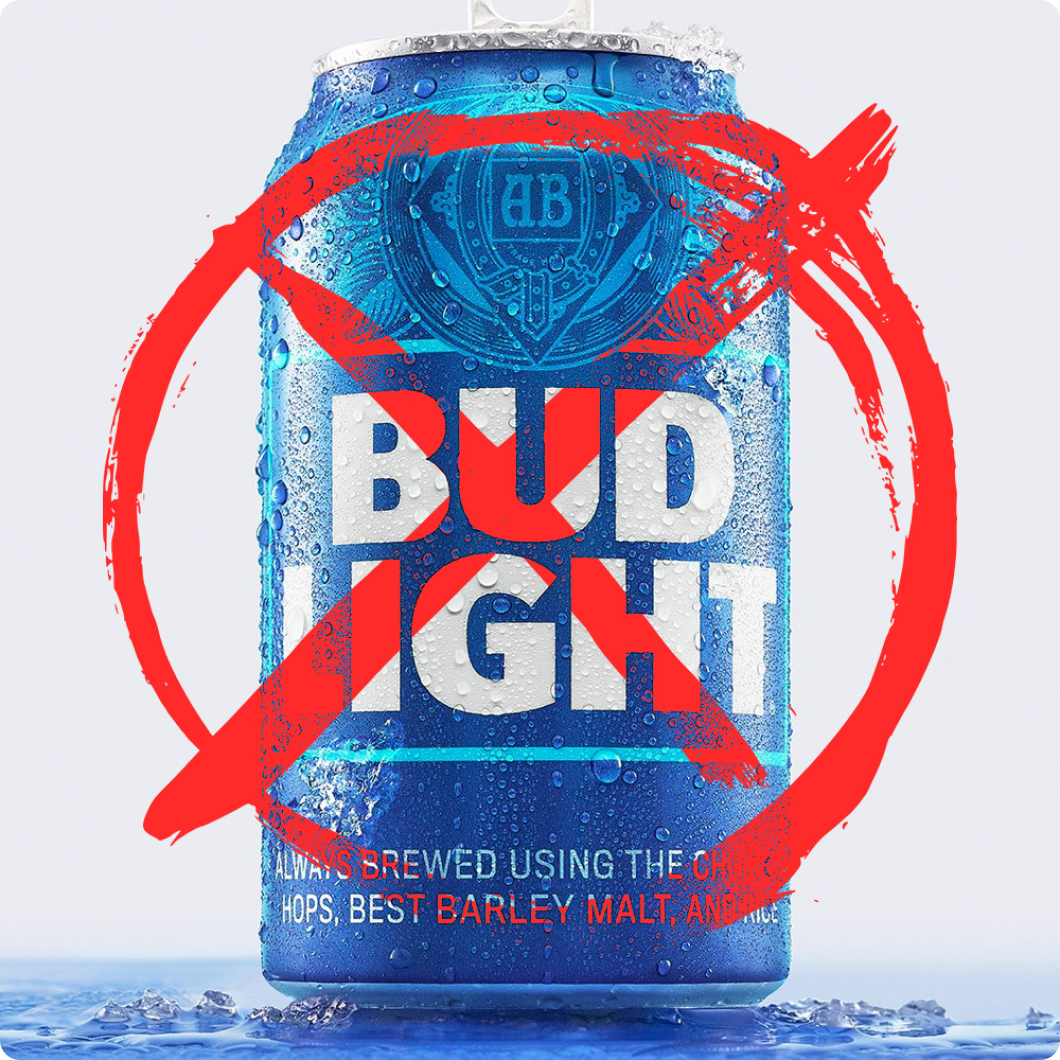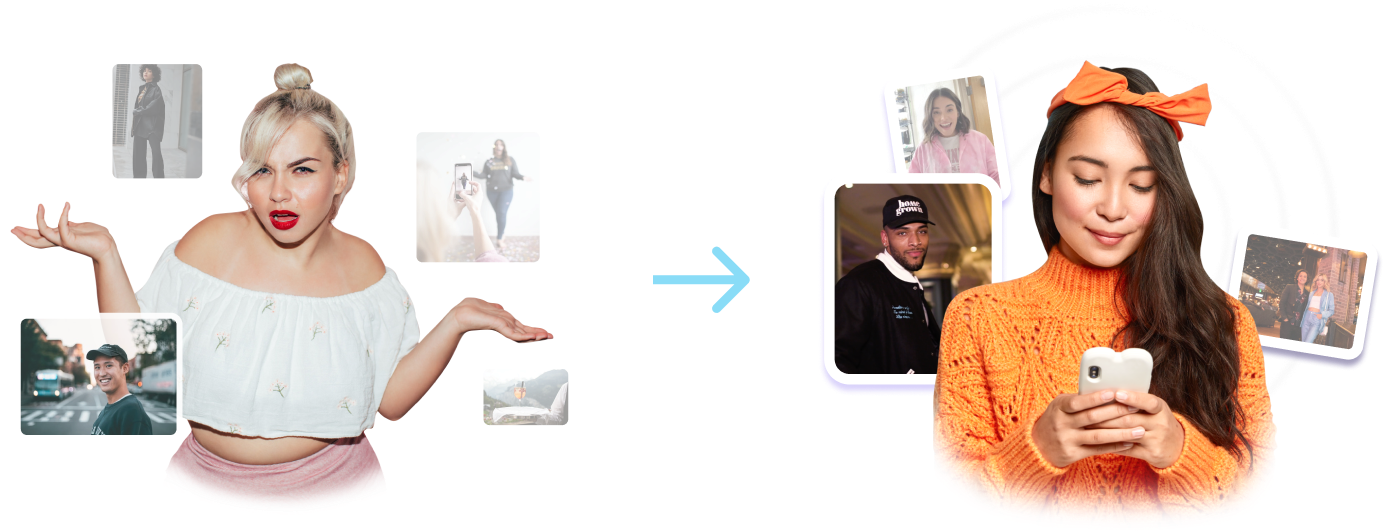
How to Avoid Bud Light's Marketing Disaster
by Maria Brown - With over two decades in cutting-edge data science, machine learning, and AI applications, Maria Brown is a leading voice in Generative AI for B2B and B2C marketing.
Learning from Bud Light's Influencer Marketing Blunder: How Artificial Intelligence Can Prevent Dumb Mistakes
If you want to illustrate why brands need data-informed decisions when doing influencer marketing, you need look no further than the case of Bud Light. Whatever you think of the Dylan Mulvaney controversy, the bottom line for Bud Light parent Anheuser-Busch is $15.7 billion in losses since April 1 and projected annual sales declines of 12% to 13%. In an epic marketing disaster, Bud Light managed first to alienate a significant chunk of its core demographic, then backtrack and anger the same audience it sought to attract in the first place.
But Bud Light's blunder isn't unique, and we don't need to pile on the legacy brand to make the point. The history of marketing is replete with historical and recent examples of companies that have made branding decisions out of touch with their target market. New Coke. Pepsi's Kendall Jenner ad. Star Wars: The Last Jedi. The list goes on.
What Caused Bud Light's Marketing Fail?
What causes such colossal marketing disasters? Anonymous sources at Bud Light in crisis management mode have blamed a disconnect between upper management and marketing executives. Bud Light marketing VP Alissa Heinerscheid explained that she sought to attract young drinkers by repudiating what she called the brand's "fratty out-of-touch humor".
Speaking to PR Week, Adam Ritchie of Adam Ritchie Brand Direction observed that Bud Light's failure felt like the brand was trying to take a "shortcut toward trendiness". Peppercomm CEO Steve Cody concurred, saying that Bud Light's temporary trendiness came across as fake, inauthentic "purpose-washing" out of touch with the brand's own purpose and values.
These diagnoses from PR professionals underscore the risks brands face when their marketing teams launch campaigns based on bright ideas uninformed by target audience feedback. Bud Light wanted to attract a younger demographic, but the means it chose to do so alienated actual Bud drinkers as well as young activists unimpressed by impersonations of wokeness. This would not have happened if Bud Light had made more effort to get feedback from actual consumers before launching their campaign. In today's connected culture, that means making data-informed decisions driven by digital input from online audiences.
In this post, we'll show you how using AI to make data-informed decisions can help you avoid mistakes like Bud Light's and enjoy the fruits of successful influencer marketing campaigns. First, we'll look at why marketing blunders like Bud Light's happen and how lack of data contributes to campaign failures. Then we'll explain how RAD Intel uses artificial intelligence to connect audience persona models with the right creative strategies and key opinion leaders to reach your target demographic. Finally, we'll walk you through the process of launching a successful influencer marketing campaign that avoids the types of mistakes Bud Light made.
.png?width=688&height=367&name=Bud%20graphics%20(1).png)
How Marketing Blunders Happen
Bud Light's Dylan Mulvaney marketing disaster replicated mistakes Pepsi made with its failed Kendall Jenner ad campaign, and insights gained from that episode shed light on how these types of blunders happen. The Atlantic staff writer Joe Pinsker spoke to industry insiders and discovered what typically happens.
The process usually begins with a recommendation based on an internal research report, Pinsker learned. For example, a company's research might indicate that Millennials would be a good target demographic to pursue. Seeking to identify what values appeal to Millennials, the research team learns that Millennials identify with social justice activism. Combining these pieces of data, the research team concludes that an activist ad campaign will attract Millennials. (As we'll discuss later, this conclusion is filled with biases and is often incorrect.)
These assumptions get passed on to the brand's marketing agency in the form of a creative brief. Working over a several-month period, the creative team's copywriter and art director brainstorm ideas and share them with the project director. The project director reviews ideas, tosses some out, and selects some for development. Eventually, the director picks their favorite idea and shares it with the rest of their creative agency for feedback and approval.
The approved idea gets passed back to the client for their input. Once the agency and client agree on a final script, a producer gets the production process rolling. During production, the ad may be shown to focus groups for feedback. Finally, the finished ad gets released.
And at that point, if something has gone wrong earlier in the process, the damage is done. The brand, aka "you" are left with inauthentic content, and your audience is well aware of it.
The Bud Light mistake should serve as a crucial reminder for brands and marketers. With the rise of influencers who have amassed large audiences, secondary interest groups have become even more important. This is critical - especially as more and more brands aim to tackle sensitive topics.
Why does, or should we say doesn't this happen?
McKinsey research unveiled personalization as the foremost trend among consumers to foster loyalty within their customer base. This advice from McKinsey applies to both creators and brands. A successful brand should tailor its offerings to a select set of buyer personas, while creators should craft content that resonates with those same personas.

Where Influencer Marketing Campaign Development Goes Astray
When the development process described above works correctly, the results can be beautiful. But while the process contains some checkpoints for flagging bad ideas before they move forward, there are several ways mistakes slip through the cracks.
The seeds of disaster may be sown as far back as the research stage. In the above example, the research team combined two pieces of data to reach their conclusion: Millennials would be a desirable target audience. Millennials identify with social justice activism. Therefore, we should do a social justice ad. This was essentially the reasoning underlying Bud Light's campaign as explained by Alissa Heinerscheid.
But while the research team may think this is a logical conclusion, what if the intended Millennial audience doesn't line up with those same conclusions? What if Millennial beer drinkers don't make decisions about beverage consumption based on whether advertisers appeal to social justice activism? What if the Millennial demographic has varying views that don't all fit into one neat box? Or what if other target demographics will respond negatively to an ad that supposedly appeals to Millennials? Unless the researchers are getting feedback from their market on whether their idea is a good idea, they're guessing. And their guesses may be biased, especially if the research team is composed of a different demographic than the audience they're trying to reach.
Another bottleneck in the development process can emerge once the creative team starts using the research team's recommendations to generate campaign concepts. While the creative team may brainstorm many ideas, ultimately, the project director gets to decide which idea will be put into production. Project directors typically rely on intuition and personal preference to make this decision. But if they're not getting input from their intended audience, they’re projecting a personal bias onto their market.
A final checkpoint to catch a potential looming disaster are highly biased, often outdated focus groups. These groups can indeed save the day, but they also can drop the ball. Some members of the group may be afraid to voice objections because of actual or perceived peer pressure. Or the producer or marketing team may ignore and override what the focus group says.
These are some of the vulnerabilities in the influencer campaign development process that create openings for disasters. One thing all these failed checkpoints have in common is reliance on subjective opinion and sentiment instead of hard data.

How Lack of Data Contributes to Marketing Disasters
Consider how lack of data can create single points of failure at key checkpoints in the development process:
If research teams reach conclusions about what demographics want without actually consulting those demographics, they can pass misguided assumptions on to the creative team. This can set the entire development process off on the wrong foot, setting the stage for failure.
If creative project directors give ad concepts the green light based on their own beliefs and preferences instead of those of their target audience, a campaign can completely misfire. No matter what the rest of the team does, or how clever the copywriters are; no matter how beautiful the art direction, and no matter how professional the production, the most perfectly packaged campaign can fail if it delivers the wrong message to the target audience.
If focus groups don't represent the intended audience, or group members don't speak candidly, or production teams suppress unwanted input, a campaign can end in disaster.
But what happens if you reverse this scenario by injecting key data at critical points in the development process?
What if research teams check their conclusions against actual audiences before passing them on to creative teams?
What if creative project directors check their preferences against actual audience preferences?
What if focus groups get feedback from a well-selected audience sample having authentic conversations about their candid opinions?
If you make these adjustments, now you have research teams passing on accurate information to creative teams. Now you have creative project directors making data-driven decisions guided by objective market research. Now you have production teams getting the opportunity to fine-tune their final productions based on what audiences actually like. Now you have a recipe for success.
This sounds great in theory. But putting these insights into action is complex at best.
How RAD INTEL Delivers Persona-based Influencer Marketing
RAD Intel has developed the industry-leading standard for KOL/influencer marketing that keeps marketing campaigns aligned with their target audiences and prevents disasters. With over 600 API-based data connections, including Reddit, we provide unparalleled access to authentic conversations that ultimately match creative strategy to audience targets. This results in unbiased influencer marketing powered by artificial intelligence alongside a continuous feedback loop informed by data.
How does it work?
We take a step-by-step approach that starts with AI-informed audience personas that illuminate creative strategies and influencer selections.
Step 1: Establish Data-based Goals and Benchmarks
During our discovery process, your client success manager trains our AI on your performance goals. Our onboarding process ingests your historical performance data from social and brand-owned channels to establish measurable benchmarks and quantifiable performance goals.
Step 2: Develop AI-informed Persona Models for Audience Identification
Using the data from 600+ API connections and Reddit, we identify the dominant interests and topics your target audience persona is talking about. Expanding on this, we identify secondary and overlapping interests your target customer cares most about. This process provides our clients with AI-informed persona models for optimal audience identification and messaging strategies. There's no need to guess what your audience wants because we know. This information is unbiased and if used properly, ensures the optimal messaging strategy for your target customer.
Step 3: Connect Persona Models to Creative Strategies
Next, your AI-informed persona models are used to guide the creative strategy for your target audience. Connecting your campaign objective to who your target persona is, we identify what interests your audience cares about, as well as where and when you should distribute content to reach them. We help you understand exactly why and how to connect with your audience.
Step 4: Identify the Right Influencers
With your target persona and optimal strategy defined, our AI platform is able to match influencers and key opinion leaders who fit your audience by persona. Our AI identifies the top 1% of KOLs and influencers who match your campaign criteria. Based on our findings, we provide AI-informed recommendations for approval. We work with you to identify evangelists that authentically align with your target customer persona and campaign strategy.
Step 5: Using your Performance Data to Inform
After you launch your campaign, we use ongoing performance monitoring to make sure you stay aligned with your audience. Through ongoing tracking, reporting, and optimizations, we ensure each client continually achieves their intended goals. In short, we ensure our clients don't end up with a marketing misfire like Bud Light.
How a Successful Influencer Marketing Campaign Works
The RAD Intel way is a methodology powered by industry-leading artificial intelligence, designed specifically for influencer marketing.
1 AI delivers the optimal audience persona, content strategy
2 AI matches talent recommendations by persona and content strategy for approval
3 We handle everything including, contracting, content rights and campaign deliverables
4 Client control accepting and rejecting influencers including content revisions
5 We handle quality assurance which includes; reviewing content at scale, managing asset distribution, integrating content with brand and social channels and adapting content for paid amplification
Simply put, our clients rely on our data sources and AI-powered persona models to eliminate uncertainty when making campaign decisions. Witness the power first-hand with a live demo today.

Written by Maria Brown
With over two decades in cutting-edge data science, machine learning, and AI applications, Maria Brown is a leading voice in Generative AI for B2B and B2C marketing.



.png)